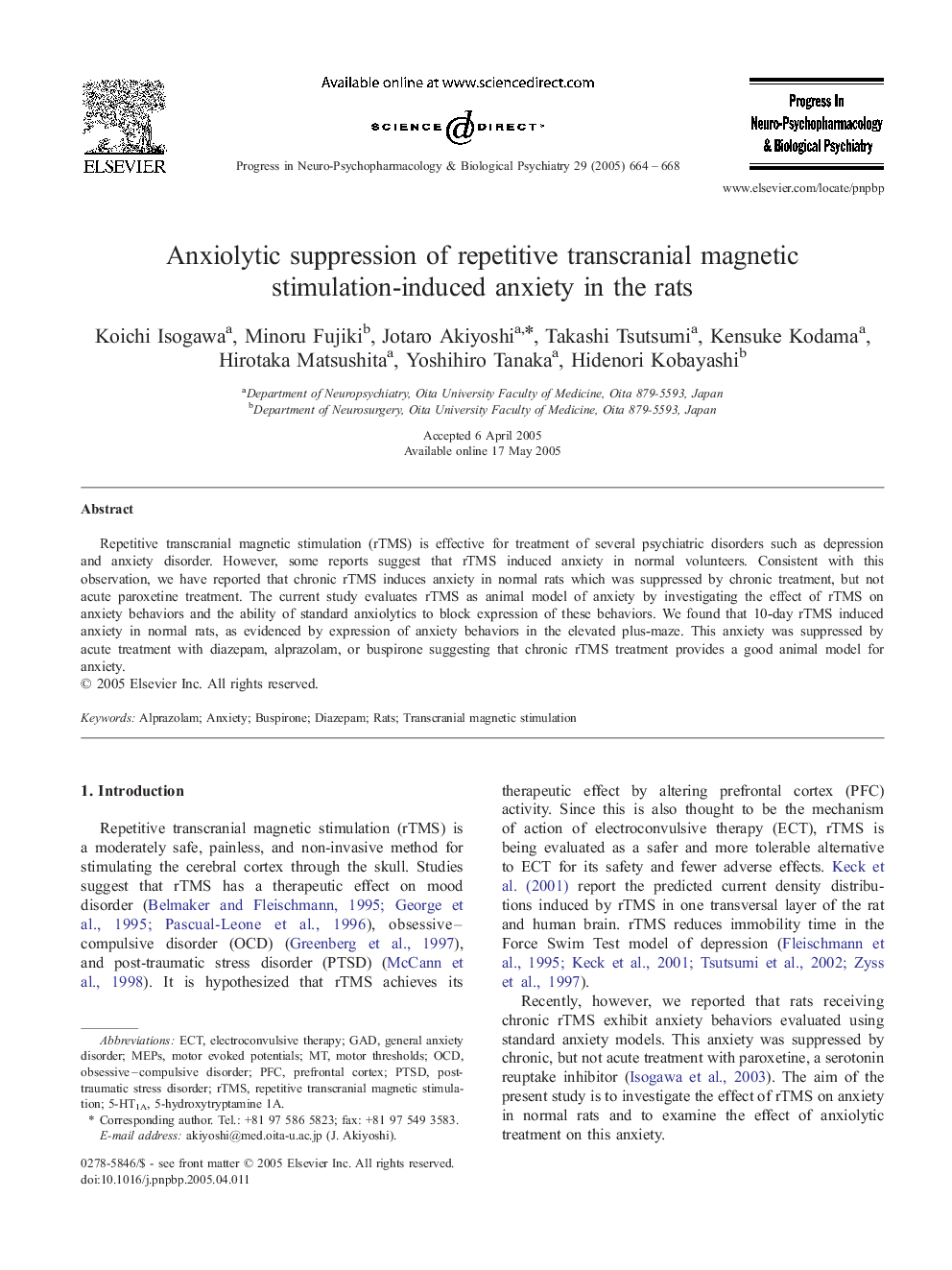| Article ID | Journal | Published Year | Pages | File Type |
|---|---|---|---|---|
| 9016376 | Progress in Neuro-Psychopharmacology and Biological Psychiatry | 2005 | 5 Pages |
Abstract
Repetitive transcranial magnetic stimulation (rTMS) is effective for treatment of several psychiatric disorders such as depression and anxiety disorder. However, some reports suggest that rTMS induced anxiety in normal volunteers. Consistent with this observation, we have reported that chronic rTMS induces anxiety in normal rats which was suppressed by chronic treatment, but not acute paroxetine treatment. The current study evaluates rTMS as animal model of anxiety by investigating the effect of rTMS on anxiety behaviors and the ability of standard anxiolytics to block expression of these behaviors. We found that 10-day rTMS induced anxiety in normal rats, as evidenced by expression of anxiety behaviors in the elevated plus-maze. This anxiety was suppressed by acute treatment with diazepam, alprazolam, or buspirone suggesting that chronic rTMS treatment provides a good animal model for anxiety.
Keywords
5-HT1ArTMSOCDBuspirone5-hydroxytryptamine 1APFCECTGADpost-traumatic stress disorderPTSDGeneral anxiety disorderObsessive–compulsive disorderAnxietyalprazolamRepetitive transcranial magnetic stimulationTranscranial magnetic stimulationElectroconvulsive therapydiazepamprefrontal cortexMotor evoked potentialsRatsMEPs
Related Topics
Life Sciences
Neuroscience
Biological Psychiatry
Authors
Koichi Isogawa, Minoru Fujiki, Jotaro Akiyoshi, Takashi Tsutsumi, Kensuke Kodama, Hirotaka Matsushita, Yoshihiro Tanaka, Hidenori Kobayashi,
